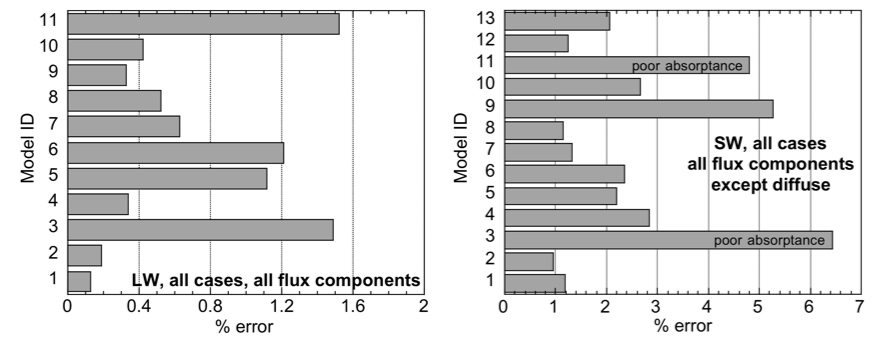ARM Measurements Help to Evaluate Radiation Codes Used in Global Modeling
Submitter:
Oreopoulos, Lazaros — NASA
Mlawer, Eli J. — Atmospheric and Environmental Research
Area of research:
Radiation Processes
Journal Reference:
Science
Radiative processes are key drivers of the Earth’s climate. Radiative forcing due to increased abundances of greenhouse gases in the atmosphere is with high probability the root cause of the current warming of the planet and is very likely to lead to significantly higher global temperatures in the next century. Society relies upon global climate simulation models to predict the nature of future climate change, and it is critical that these models have accurate parameterizations of atmospheric radiative processes. Previous studies have shown that radiation codes in climate models, which need to be very fast in order to be used in multi-decade global simulations, may be inadequate in reproducing the radiative effects of increased greenhouse gases obtained by more precise radiation codes that have been extensively validated with observations but are too slow for climate models. The ASR program is well-positioned to assess the quality of fast radiation code performance due to the important role it has played in developing and validating both high-resolution reference radiation codes and their faster counterparts that run in climate models.
Impact
The results from Phase I of the Continual Intercomparison of Radiation Codes (CIRC), intended as an evolving and regularly updated reference source for evaluation of radiation codes used in general circulation models (GCMs) and other atmospheric applications, indicate that further improvements to these codes are needed. CIRC differs from previous intercomparisons in that it relies on an observationally validated catalogue of cases. The seven CIRC Phase I baseline cases, five cloud-free and two with overcast liquid clouds, were built around observations by the Atmospheric Radiation Measurements (ARM) Climate Research Facility that satisfy the goals of Phase I: namely, to examine radiation code performance in realistic, yet not overly complex, atmospheric conditions. Additional idealized “subcases” were also employed to facilitate interpretation of model errors. Besides quantifying individual model performance for 11 thermal and 13 solar radiation codes with respect to reference line-by-line calculations, the study also highlighted radiation code behavior for conditions of doubled CO2, issues arising from spectral specification of surface albedo, and the impact of the inclusion of scattering in the thermal infrared. The study revealed that several of the participating radiation codes were inaccurate in their estimates of absorbed and diffuse shortwave flux, as well as in the treatment of spectral surface albedo. While performance in LW CO2 forcing calculations was good overall with one or two exceptions, estimation of SW CO2 forcing is a capability that some codes either do not have at all or is restricted to downwelling SFC fluxes. For the codes with full SW CO2 forcing capabilities, performance was quite poor, echoing previous findings. Nonetheless, it appears that the current generation of radiation codes do indeed perform better than the codes of two decades ago.
Summary
By expanding the range of conditions under which participating codes are tested, future CIRC phases will allow even more rigorous examination of radiation code performance. The effort needs to be expanded to include judicious evaluation of code performance in terms of the accuracy needed to address operational GCM requirements for current and future climate simulations. Although it may not be an easy task, a key next step would be to attempt to reach a community consensus on thresholds for performance that define an acceptable level of radiation code performance. As CIRC moves to subsequent phases and reassesses the performance of radiation codes with a more expansive set of cases, we hope to converge towards a determination of such application-dependent performance targets.


